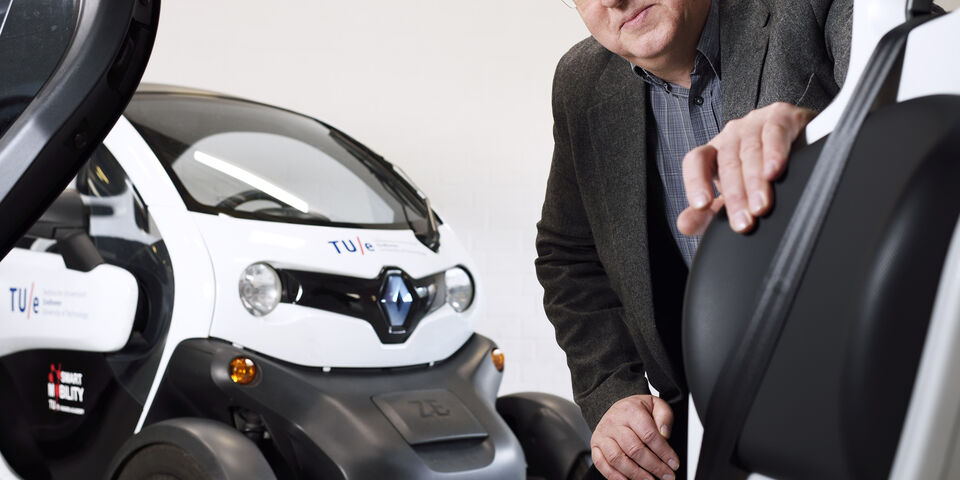Automatically following the vehicle in front
Should we take Google’s claim that it is going to put self-driving cars onto the market within five years seriously? Will we also have the first driverless cars moving around here before long? Henk Nijmeijer does not expect that things will develop that swiftly with autonomous vehicles. The professor of Dynamics & Control thinks that cars should first learn to communicate with each other. That is why the Automotive Lab of TU/e is adjusting Renault Twizy’s in such a way that they can anticipate the driving behavior of vehicles in front of them. Next year the ultimate test will be conducted in a new Grand Cooperative Driving Challenge on the A270 between Eindhoven and Helmond.
If we are to believe the latest reports, Google considers its self-driving car to be an ideal taxi - without a driver, then. If anything, this is a publicity stunt, Henk Nijmeijer assumes. “Time and again they succeed in making the headlines with their plans, which they do very cleverly indeed. Google hopes that it can attract a major carmaker to do business with. And they will probably pull it off.”
This does not imply that they are home and dry, though, according to the automotive expert. “You should remember that the car can only do forty km/h and that no other cars are allowed within a 25-meter radius. You could call it a mobile library: it contains a database with various traffic situations and the appropriate responses to those situations. By means of a camera and radar it scans the situation and searches for it in its library. This takes time, even for the fastest systems. Hence the safety margin. That is far from practical, of course.”
The Google Car will perform fine when running its test rounds in the desert of Silicon Valley, but that is totally different from releasing an autonomous vehicle in the jungle of city traffic. Nijmeijer expects that you can count on situations occurring there that cannot be found in the car’s library. “In that case the car does not respond at all, which might well be the worst conceivable response.”
The route towards autonomous vehicles on the public road will be gradual, Nijmeijer expects. “You should begin with what we call cooperative driving. In this technique, vehicles have a wireless connection so that your car is told when the vehicle in front suddenly brakes or accelerates.” By means of a kind of sophisticated cruise control the car reacts much faster to the speed changes of the car in front than a driver could do himself. This system is called Cooperative Adaptive Cruise Control (CACC).
“CACC means you don’t need legs anymore, you might say: you do not need to step on the gas or on the brake yourself anymore.” The idea is that CACC can prevent so-called phantom traffic jams –which occur purely through poor anticipation. In 2011 this method was tested extensively on the A270 between Eindhoven and Helmond. TU/e was closely involved in the organization of this Grand Cooperative Driving Challenge (GCDC) and also took part with a truck that was made available by car manufacturer DAF. “Next year there is going to be a new GCDC, in which we will be taking things a step further. The idea is that the steering will also be automated then.”


Discussion